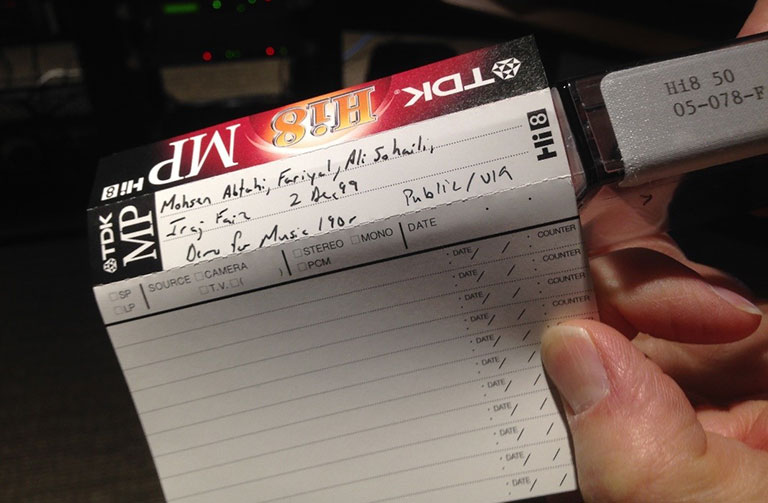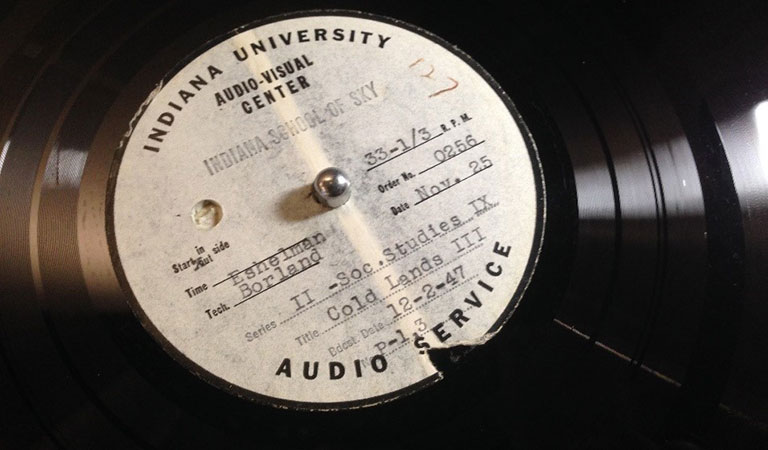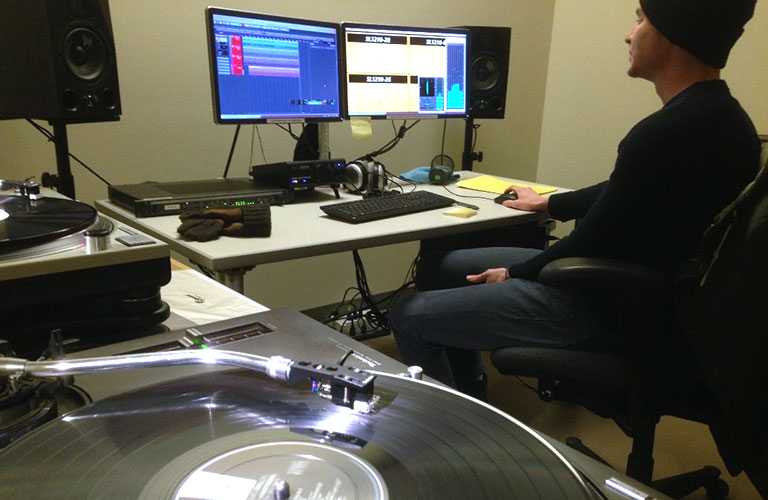Nearly 100,000 aging and precious recordings have been rescued from ruin by the Media Digitization and Preservation Initiative (MDPI) since it began last summer. Given that our task is to digitize approximately 280,000 audio and video recordings by the year 2020, that's good progress. We talk a lot about the importance of this preservation effort, but what does it look like? At our 50,000-item milestone, Audio Preservation Engineer Melissa Widzinski took a look around and shared what she found.
As of January 13, 2016, MDPI has digitized 50,000 items since the start of production last summer! This project reflects a partnership between the large-scale parallel transfer workflows of Memnon, a Sony company, and the one-to-one transfer workflows for more delicate items by the Indiana University team. On any given operational day at MDPI, IU staff is digitizing items in two audio preservation studios and one video preservation studio. Memnon staff is conducting parallel digitization in their open-reel tape room, digital audio tape (DAT) room, four LP digitization rooms, and video digitization room.
To mark this milestone, we are taking a snapshot that includes all of the recordings digitized in the facility on this day at 11 AM. (There is no way to mark which particular item was the 50,000th since a large number of recordings are in the digitization process at any given time.)
We will start by taking a look at the IU video preservation studio, where we are working on a Hi-8 tape from the Archives of Traditional Music. The tape is from a collection donated by Richard Wolf, a professor of Ethnomusicology at Harvard. It is part of the collection of tapes he made during his field research in India and Pakistan. This particular tape was recorded on December 2, 1999, and features a demonstration of instruments for a music class.




